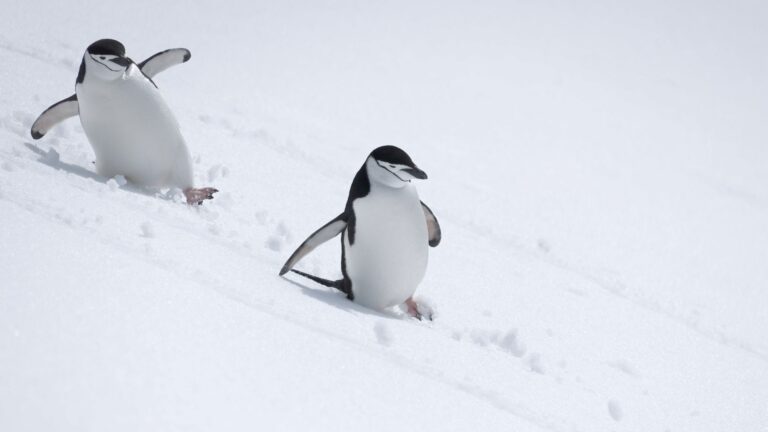13 Deep Sea Creatures So Unbelievable, They Shouldn’t Exist

The deep ocean remains Earth’s final frontier, hiding creatures that defy imagination. Miles beneath the waves, where sunlight can’t penetrate and pressure would crush a submarine, evolution has crafted monsters and marvels unlike anything we see on land.
These deep-sea dwellers have developed extraordinary adaptations to survive in one of the planet’s most extreme environments.
1. Goblin Shark: The Living Fossil With An Alien Face

Pink-skinned and prehistoric-looking, the goblin shark ambushes prey with jaws that literally shoot forward out of its face. This rare creature has remained virtually unchanged for 125 million years, earning its nickname as a living fossil.
Its bizarre snout works like a metal detector, sensing tiny electrical fields produced by nearby fish. When dinner is detected, the jaw extends faster than you can blink – snatching unsuspecting victims in the pitch-black depths.
Scientists have only encountered this shark a handful of times, making it one of the ocean’s most mysterious predators.
2. Barreleye Fish: The Transparent-Headed Stargazer
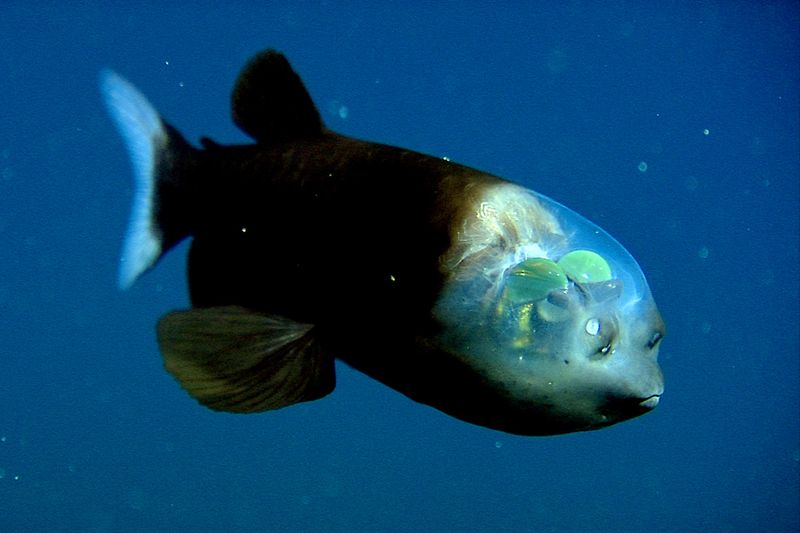
Imagine having a see-through head with your eyes inside it – that’s the barreleye fish’s reality. Its dome-shaped, transparent cranium houses two green, barrel-shaped eyes that can rotate upward to spot prey swimming above.
The fish spends most of its time motionless, hovering in the deep water while scanning for tiny silhouettes against the faint light from above. Those tubular eyes are extremely sensitive to light, helping it hunt in the twilight zone where darkness reigns.
When it spots food, the barreleye can quickly adjust its position for a perfect strike.
3. Vampire Squid: Not A Vampire, Not A Squid

Despite its terrifying name, the vampire squid is actually quite gentle. This ancient creature lurks in oxygen-depleted zones where few predators dare venture. When threatened, it doesn’t squirt ink – instead, it turns itself inside out, revealing spiny projections that make it look like a spiky pineapple.
Its most magical defense is bioluminescence. The vampire squid can release glowing particles that confuse attackers while it escapes into darkness.
Neither true squid nor octopus, this living relic belongs to its own separate order of creatures that has survived virtually unchanged for millions of years.
4. Anglerfish: The Ocean’s Most Terrifying Marriage
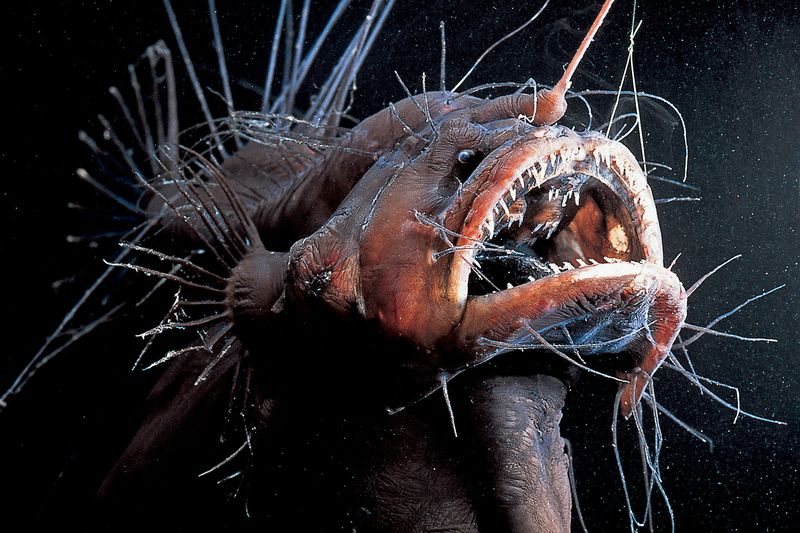
Female anglerfish cruise the abyss with a glowing lure dangling from their heads, attracting both prey and potential mates. Their gigantic mouths and needle-like teeth can swallow victims twice their size in a single gulp.
Male anglerfish live solely to find a female. Once he does, he bites into her body and physically fuses with her, eventually dissolving until he’s nothing but a pair of gonads providing sperm whenever she’s ready to reproduce.
Some anglerfish can open their jaws so wide that they resemble a black hole with teeth – a last sight many deep-sea creatures ever see.
5. Japanese Spider Crab: The Walking Nightmare
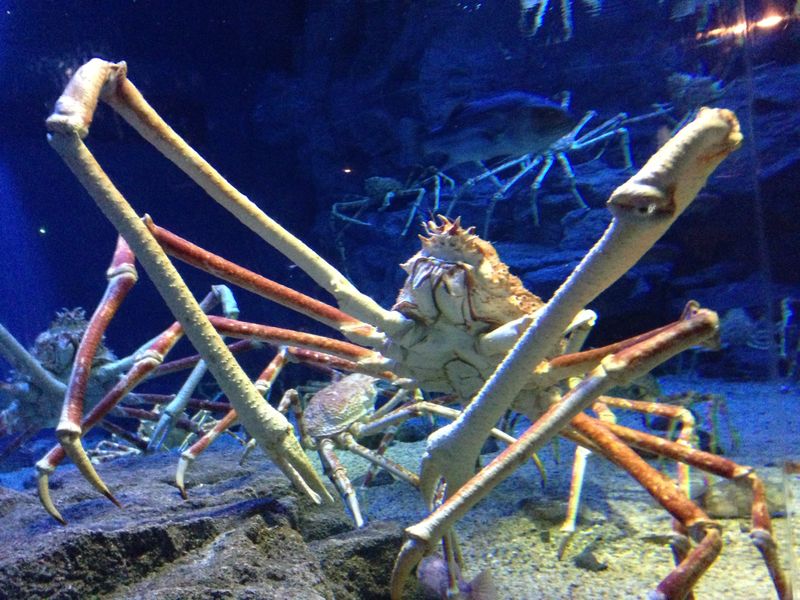
Stretching up to 12 feet from claw to claw, Japanese spider crabs are the largest arthropods on Earth. Their spindly, alien-like legs can easily wrap around a small car, while their armored bodies grow bigger than a basketball.
These giants roam the ocean floor around Japan, using their spectacular reach to pluck food from crevices and scavenge dead animals. Despite their monstrous appearance, they’re surprisingly gentle – more interested in picking apart dead fish than hunting live prey.
Spider crabs can live up to 100 years, slowly growing more massive with each passing decade.
6. Frilled Shark: The Swimming Fossil With 300 Teeth
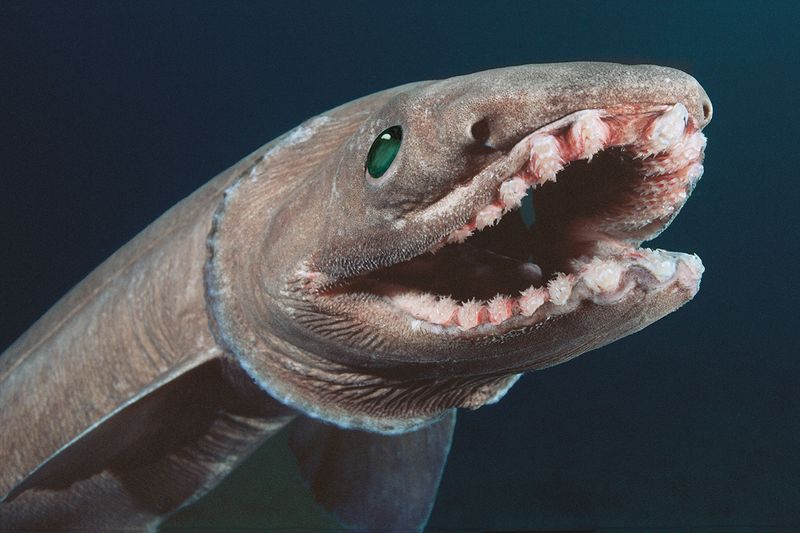
Swimming through the deep like a serpent from a nightmare, the frilled shark has remained virtually unchanged for 80 million years. Its primitive appearance earned it the nickname “living fossil,” with a body plan that looks more like it belongs in the age of dinosaurs.
The shark’s mouth contains 25 rows of backward-facing teeth – roughly 300 in total – arranged in a terrifying spiral pattern. Once prey enters this dental trap, escape becomes impossible.
Rarely seen alive, these ancient predators hunt by bending their bodies and striking like snakes, swallowing victims whole in a single, lightning-fast lunge.
7. Blobfish: The World’s Saddest-Looking Animal

The blobfish isn’t actually a blob in its natural habitat. This misunderstood creature only looks melted and sad when brought to the surface, where the dramatic pressure change causes its body to collapse like a deflated balloon.
In the crushing depths where it lives – up to 4,000 feet below the surface – the blobfish appears much more normal. Its gelatinous flesh is perfectly adapted to withstand pressure that would crush human bones.
Rather than chasing prey, this lazy fish simply hovers slightly above the seafloor, letting edible particles float into its mouth as it drifts along ocean currents.
8. Giant Isopod: The Bus-Sized Roly-Poly

Imagine a roly-poly bug the size of a football – that’s a giant isopod. These massive crustaceans are essentially deep-sea pill bugs that grew to monstrous proportions in the cold, high-pressure environment of the ocean floor.
Giant isopods can go years without eating. One specimen in a Japanese aquarium refused food for over five years before finally having a meal! Their incredible metabolism allows them to survive in the food-scarce abyss.
Despite their intimidating appearance, they’re actually quite docile scavengers, primarily feeding on dead animals that sink to the ocean floor.
9. Dumbo Octopus: The Adorable Ear-Flapping Explorer
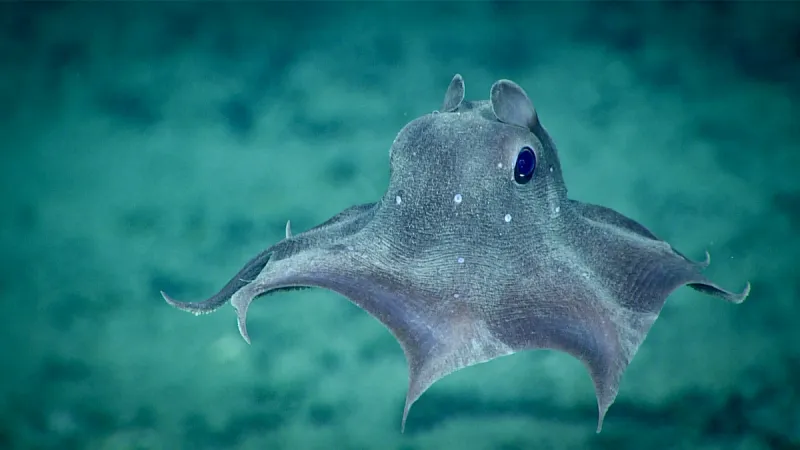
Named after Disney’s flying elephant, the dumbo octopus uses ear-like fins to “fly” through the deepest parts of the ocean. These charming creatures live deeper than almost any other octopus – some have been spotted nearly 13,000 feet below the surface!
Unlike their shallow-water cousins, dumbo octopuses don’t spray ink or change colors dramatically. The crushing depths they inhabit have few predators, so they’ve evolved to be surprisingly chill.
They hunt by hovering above the seafloor and pouncing on small crustaceans, worms, and other tiny animals that they swallow whole.
10. Fangtooth Fish: Small Body, Monstrous Teeth
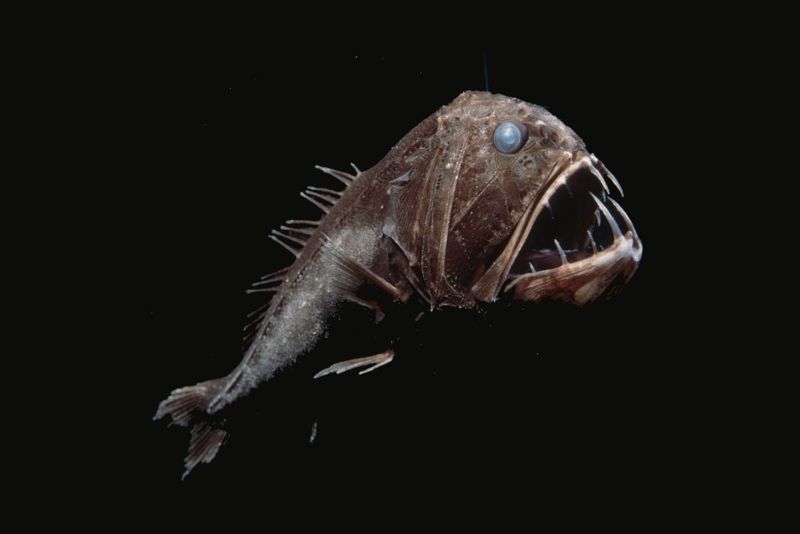
Don’t let its six-inch size fool you – the fangtooth fish has the largest teeth relative to body size of any fish in the ocean. Its fangs are so enormous that special sockets in the roof of its mouth allow the lower teeth to fit when it closes its jaws.
Living in perpetual darkness between 1,600 and 16,000 feet deep, these fish rely on their massive teeth rather than eyesight to secure meals. Their tiny eyes can barely detect the faintest light from bioluminescent creatures.
Despite their terrifying appearance, fangtooths are actually quite vulnerable, serving as prey for larger deep-sea hunters.
11. Yeti Crab: The Hairy-Armed Bacteria Farmer

Discovered in 2005, the yeti crab looks like it’s wearing fuzzy mittens. Its arms are covered in hair-like structures that serve a brilliant purpose – they farm bacteria for food! Living near hydrothermal vents where toxic chemicals spew from the Earth’s crust, these crabs wave their hairy arms in the mineral-rich water.
Bacteria colonize the hairs, feeding on chemicals from the vents. The crab then scrapes the bacteria off its arms and into its mouth – essentially growing its own food.
These remarkable creatures survive in water hot enough to cook most sea life, thriving where few other animals can even survive.
12. Gulper Eel: The Living Vacuum Cleaner
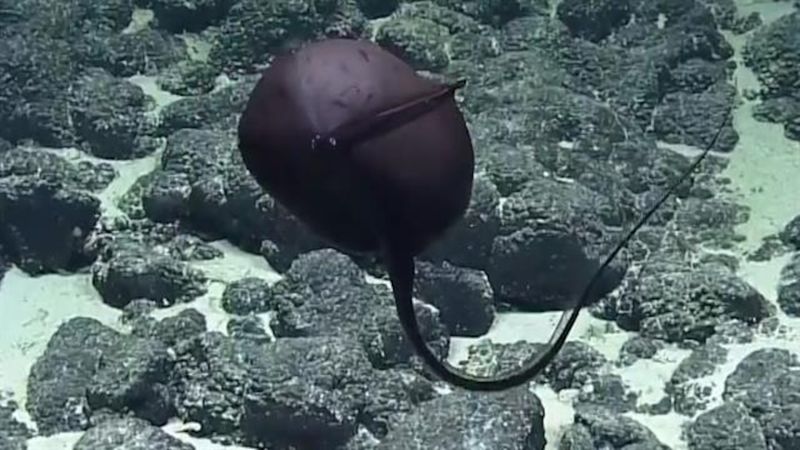
The gulper eel’s most striking feature is its enormous mouth – vastly larger than its body. This bizarre adaptation allows it to swallow prey much bigger than itself, expanding like a pelican’s pouch to accommodate large meals in the food-scarce deep.
Its body tapers into a long, whip-like tail tipped with a light-producing organ that it uses as bait. Wiggling this glowing lure in the darkness attracts curious fish that quickly become dinner.
When not feeding, the gulper eel’s massive jaw folds back against its body like a deflated balloon, allowing it to swim more efficiently through the midnight waters.
13. Viperfish: The Impossible Mouth

The viperfish’s teeth are so long they don’t even fit in its mouth. These needle-like fangs curve back toward its eyes, growing so enormous that the fish had to evolve a special solution – its lower jaw hinges downward at a 90-degree angle to make room!
Glowing photophores line its body, acting as both lure and camouflage in the midnight depths. The lights on its dorsal spine flicker like a fishing rod above its head, enticing prey to swim right into those waiting fangs.
During daylight hours, viperfish migrate to deeper waters, sometimes reaching depths of 9,000 feet to hide from potential predators.




